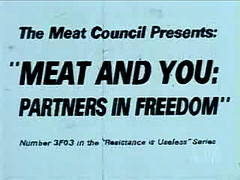1 in 10 people worldwide annually and 420,000 deaths (125,000 of whom are kids). That’s a lot.
WHO released these numbers it in a report published in PLOS Medicine today.
Almost one third (30%) of all deaths from foodborne diseases are in children under the age of 5 years, despite the fact that they make up only 9% of the global population. This is among the findings of WHO’s Estimates of the global burden of foodborne diseases – the most comprehensive report to date on the impact of contaminated food on health and wellbeing.
The report, which estimates the burden of foodborne diseases caused by 31 agents – bacteria, viruses, parasites, toxins and chemicals – states that each year as many as 600 million, or almost 1 in 10 people in the world, fall ill after consuming contaminated food. Of these, 420 000 people die, including 125 000 children under the age of 5 years.
“Until now, estimates of foodborne diseases were vague and imprecise. This concealed the true human costs of contaminated food. This report sets the record straight,” says Dr Margaret Chan, Director-General of WHO. “Knowing which foodborne pathogens are causing the biggest problems in which parts of the world can generate targeted action by the public, governments, and the food industry.”
While the burden of foodborne diseases is a public health concern globally, the WHO African and South-East Asia Regions have the highest incidence and highest death rates, including among children under the age of 5 years.
“These estimates are the result of a decade of work, including input from more than 100 experts from around the world. They are conservative, and more needs to be done to improve the availability of data on the burden of foodborne diseases. But based on what we know now, it is apparent that the global burden of foodborne diseases is considerable, affecting people all over the world – particularly children under 5 years of age and people in low-income areas,” says Dr Kazuaki Miyagishima, Director of WHO’s Department of Food Safety and Zoonoses.
Diarrhoeal diseases are responsible for more than half of the global burden of foodborne diseases, causing 550 million people to fall ill and 230 000 deaths every year. Children are at particular risk of foodborne diarrhoeal diseases, with 220 million falling ill and 96 000 dying every year.

.jpeg) “There is no question that the United States has the safest food supply in the world and other countries consider the U.S. the ‘gold standard.’ Cattle producers support the establishment of realistic food safety objectives designed to protect public health to the maximum extent possible.
“There is no question that the United States has the safest food supply in the world and other countries consider the U.S. the ‘gold standard.’ Cattle producers support the establishment of realistic food safety objectives designed to protect public health to the maximum extent possible. .jpg) While introducing a Senate motion to block the movement of older Canadian cattle into the U.S., U.S. Senator Byron Dorgan (D-ND) couldn’t help himself and played the "
While introducing a Senate motion to block the movement of older Canadian cattle into the U.S., U.S. Senator Byron Dorgan (D-ND) couldn’t help himself and played the ".jpg) I don’t know much about farm bills and state versus federal inspection.
I don’t know much about farm bills and state versus federal inspection. .jpg) Rep. Denny Rehberg, R-Mont., apparently ignored
Rep. Denny Rehberg, R-Mont., apparently ignored .jpg) Those Chinese learn fast.
Those Chinese learn fast.  Dr. Richard Raymond, the Agriculture Department’s undersecretary of food
Dr. Richard Raymond, the Agriculture Department’s undersecretary of food  The bi-annual congress of the South African Association for Food Science and Technology in Durban was t
The bi-annual congress of the South African Association for Food Science and Technology in Durban was t